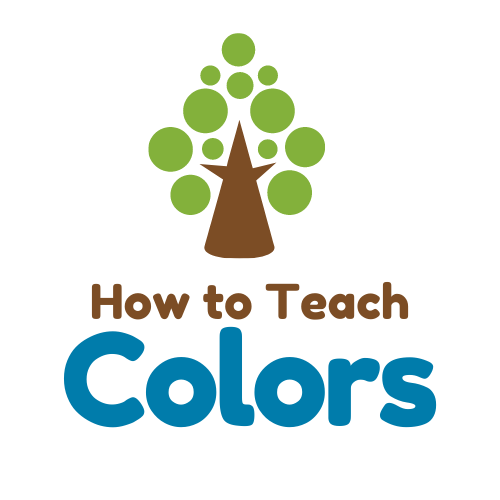
Teaching colors can be a fun and engaging experience for young children, fostering their creativity and observation skills. This page offers a variety of ideas, including interactive activities, engaging books, colorful flashcards, and fun games, all designed to make learning about colors enjoyable. Whether you’re at home or in a classroom, these resources will help bring the world of colors to life for your little ones!
Creation (Genesis 1)
God created the world with vibrant colors (blue sky, green grass, yellow sun, etc.). Children can explore colors as they learn about what God made each day.
Joseph’s Colorful Coat (Genesis 37:3)
The story of Joseph and his coat of many colors introduces the idea of different colors.
Noah’s Ark and the Rainbow (Genesis 9:13)
The rainbow is a great way to teach colors while emphasizing God's promise to Noah.
The Day the Crayons Quit by Drew Daywalt is a silly and fun story where Duncan's crayons write letters expressing their frustrations about being underused or overworked. It’s a great way to spark discussions about creativity and the emotions in art.
This book is for late preschool - elementary age. There are references to a monster, wizard, and dragon.
Pete the Cat: I Love My White Shoes by Eric Litwin tells the story of Pete, a laid-back cat who loves his white shoes. As he walks along, he steps in various messes—like strawberries, blueberries, and mud—that change the color of his shoes, but Pete remains cheerful and keeps singing his catchy song. This book highlights themes of resilience and positivity, showing kids that it's okay when things don’t go as planned.
Mix It Up! by Herve Tullet is an interactive picture book that invites young readers to explore the world of colors and mixing them together. Through simple instructions and playful illustrations, children are encouraged to tap, shake, and tilt the book to see how colors blend and change. This engaging experience not only makes learning about color fun but also fosters creativity and curiosity in young minds.
Put Me in the Zoo by Robert Lopshire is a playful story about an unusual animal who wants to be part of the zoo. With his amazing ability to change the color of his spots, he tries to prove he belongs in the zoo. However, in the end, he discovers that there’s an even better place for him to showcase his talents - the circus!
Brown Bear, Brown Bear, What Do You See? by Bill Martin Jr. is a beloved children's book that features a rhythmic, repetitive pattern as it introduces different animals and colors. Each page invites young readers to anticipate what comes next, making it engaging and interactive. Eric Carle’s vibrant illustrations perfectly complement the simple text, making it a great tool for teaching about animals and colors.
Mouse Paint by Ellen Stoll Walsh is a charming story about three little mice who discover jars of paint and experiment with mixing colors. As they play, they learn how to create new colors by combining the primary ones.
Mixed: An Inspiring Story About Color by Arree Chung tells the story of three colors—Red, Yellow, and Blue—who learn to mix together and create new colors. As they embrace their differences, they discover the beauty of blending and teamwork. This colorful book teaches kids about diversity and the joy of cooperation.
Introduce the alphabet in an simple way with our Letter Posters featuring each letter with fun formation poems and recognizable phonic images. Perfect for classrooms or home, these posters make learning letters interactive and fun!
Green Is a Chile Pepper by Roseanne Thong celebrates the vibrant colors and flavors of Hispanic culture. Through rhythmic text and lively illustrations, the book introduces children to various colorful foods and everyday objects, all while exploring the concept of color. It's a fun and engaging way for preschoolers to learn about colors while also appreciating cultural diversity and the joy of food.
The Hidden Rainbow by Christie Matheson is a beautifully illustrated picture book that invites young readers to discover the colors of the rainbow. Through interactive elements, children are encouraged to explore and engage with the story while uncovering how colors are hidden in nature. This delightful tale not only captivates with its vibrant artwork but also encourages counting and enhances visual perception, fostering a sense of curiosity about the world around them.
A Color of His Own by Leo Lionni is a heartwarming tale about a chameleon who feels sad because, unlike other animals, he doesn't have a constant color. As he changes with his surroundings, he searches for a color he can call his own. Along the way, he finds a friend, and together they learn that it's okay to be different, emphasizing themes of self-acceptance and friendship.
The Crayon Box That Talked by Shane DeRolf is a thoughtful story about a box of crayons that initially don't get along because they don't appreciate each other's differences. As they work together to create a beautiful picture, the crayons realize that each color plays an important role. This simple yet powerful story teaches children about diversity, teamwork, and the value of everyone’s unique contributions.
White Rabbit's Color Book by Alan Baker is a fun and engaging introduction to color mixing for young readers. The story follows a curious white rabbit who jumps into different pots of paint, changing colors and learning how primary colors mix to form new ones. This playful and educational book is a great way to teach children about colors and color combinations in an easy-to-understand, interactive way.
Lemons Are Not Red by Laura Vaccaro Seeger is a playful and engaging book that helps young readers learn about colors and shapes. The story features various fruits and objects, emphasizing that certain items, like lemons, are not the colors one might expect.
Press Here by Hervé Tullet is an interactive adventure that invites kids to press, shake, and tap on the book to create surprising effects on each page. With simple instructions and colorful dots, it encourages children to imagine, explore, and feel like they’re making magic happen with each turn of the page. It’s a delightful blend of play and reading that makes storytime extra engaging!
Bears See Colors by Karma Wilson is a delightful story that follows a curious bear as he explores the colorful world around him.
Little Green Peas by Keith Baker is a playful and colorful book that introduces young readers to colors through the adventures of tiny green peas. Each page features a bold color with the peas engaging in fun activities related to that color, making it a lively and engaging way for children to learn. The rhythmic text and vibrant illustrations make this a delightful and educational read for exploring colors.
The Color Monster by Anna Llenas is a delightful story that helps young children understand and express their emotions through colors. The Color Monster wakes up feeling confused, so he seeks help to sort out his feelings, represented by different colors. With vibrant illustrations and interactive pop-ups, this engaging book not only teaches kids about emotions but also encourages them to identify and talk about their own feelings.
View Additional Emotions Ideas
Help your little ones learn their colors with these vibrant, fun flashcards—perfect for preschoolers! Click the link below to download your free set today and start learning through play.
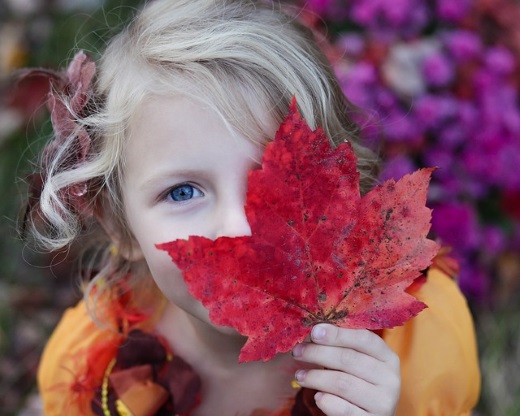
Walk around the room or take a stroll outside to search for a specific color or for each color of the rainbow in nature. If desired, use the free Color Flashcards to place next to the corresponding colored objects you find.
Due to the color focus, Uno cards provide easy use for various color games or learning. Here is one idea:
Instructions:
1. Sort through the UNO deck and pull out only the number cards (remove special cards like Skip, Reverse, etc.).
2. Shuffle the cards and lay them face up on a table or floor in a random order.
3. Call out a color (red, blue, green, or yellow).
4. Have the child find and pick up all the cards that match the color you called out.
5. Once all the cards of that color are collected, shuffle them back in and call out another color.
Variations:
- For an added challenge, call out both a color and a number (e.g., "Find all the red 5s!").
- Play in teams for group fun!

Create Handprint Flashcards for a personal touch to help the child learn his/her colors.
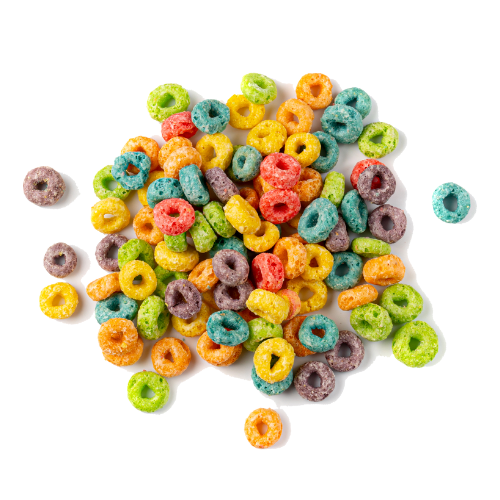
Talk about the colors while eating. Froot Loop cereal and color Goldfish crackers provide opportunities for multiple colors in one food. For added learning, sort the colors.
For fun, try to provide every color of the rainbow on the child's plate. Talk about nutrition and the importance of multi-colored foods.
Colored snacks ideas are provided on each of the individual color pages. See links below.
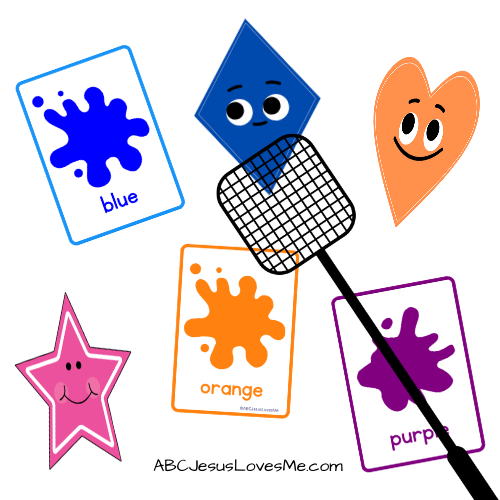
Place a few flashcards on the table that focus on learning objectives like colors, shapes, or letters. Give the child a clean fly swatter and call out a specific item for them to find and swat! This game can be played with one child or with multiple children.
To create a clear procedure, explain that when you say "Swatters Up!" the fly swatter should be held frozen in the air listening for directions. Practice swatting and holding the swatter on the target until told to move. Be sure to demonstrate how to pass the fly swatter to the next child.
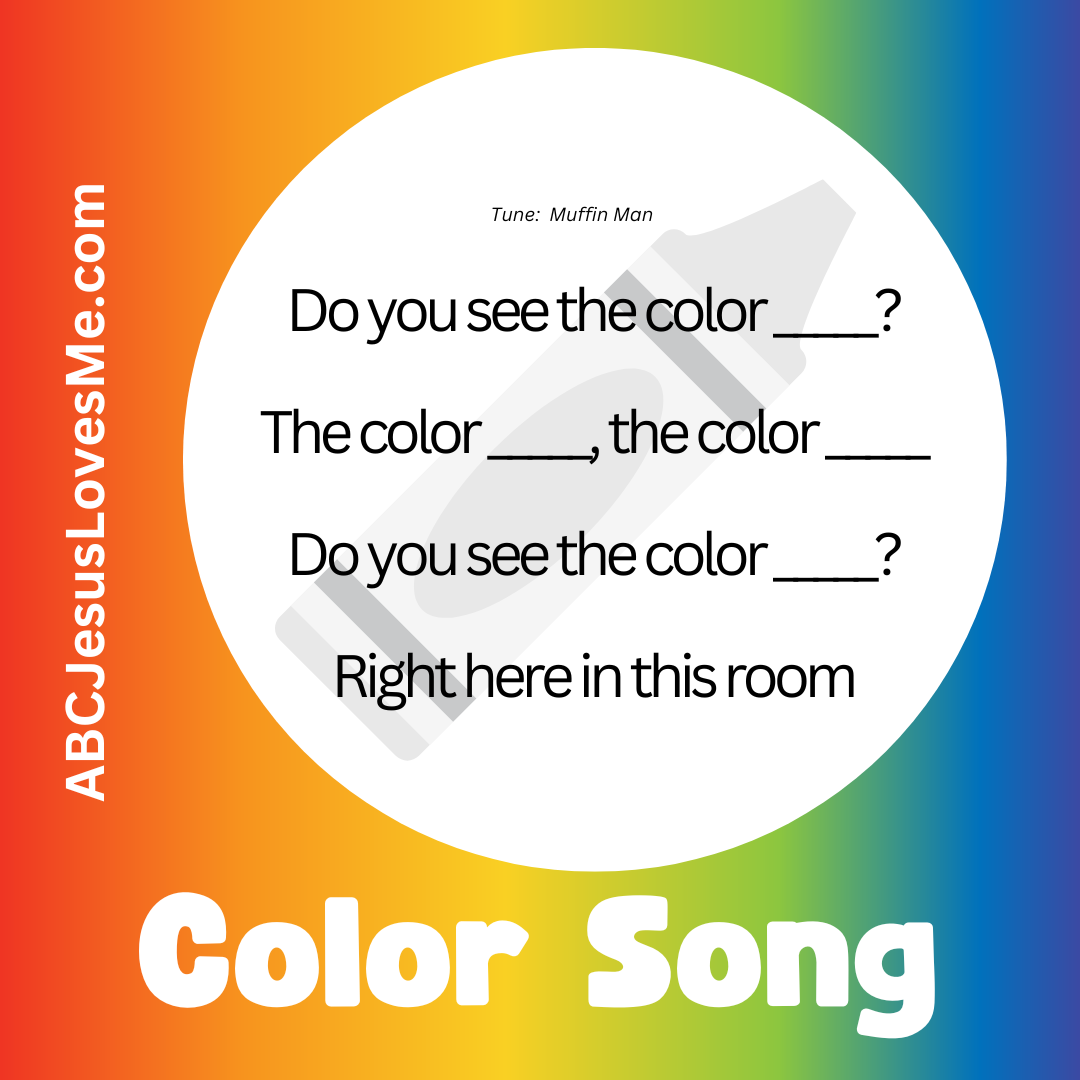
Tune: The Muffin Man
Do you see the color red
The color red, the color red
Do you see the color red
Right here in this room
Directions: Have the child walk to the colored item as you sing or shine a flashlight on the object. Change the color as you repeat the song.
See more color songs on each of the color pages. Links below.

Give your child a flashlight and say, "Shine a flashlight on something blue." Have the child find objects around the room that match the color.
Once they've mastered identifying the chosen color, move on to other colors, repeating the activity to make color learning fun and interactive!
Candy Land is a fun, classic board game perfect for young children to explore the vibrant world of colors. As players move their tokens along the colorful candy-themed path, they draw cards that guide them to spaces based on different colors. This simple gameplay encourages color recognition, helping children match the card they draw to the corresponding space on the board.
In addition to color learning, Candy Land fosters turn-taking, following instructions, and enhancing fine motor skills as children navigate their way through the candy-filled world. It’s a delightful and educational way to introduce color concepts while having fun!
Gina shares, “Our preschool has been using the ABCJesusLovesMe Comprehensive Preschool Curriculum for about 3 weeks, and I’ve seen such a great improvement in the children and teachers.” Experience the same positive changes in your preschool classroom!
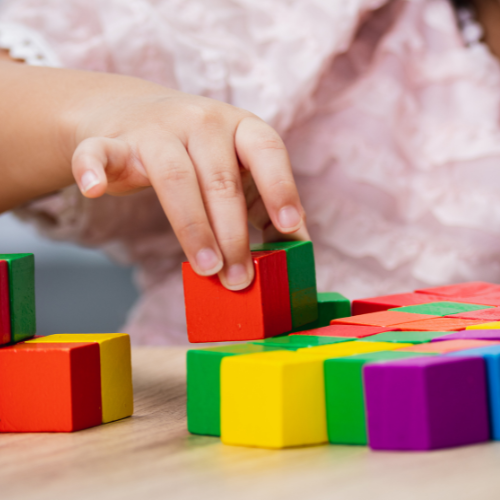
1. As a toddler plays with blocks, name the color. This introduces colors into the child's world. Begin with 2 colors of block and slowly increase.
2. Give the child one color at a time to build to reinforce a specific color.
3. Provide the child with blocks of two colors. Instruct the child to build only with the chosen color.
4. As the child builds a structure, ask him or her to identify the color of the block he/she is using. For example, “What color is this block?”
5. Hide blocks (or plastic Easter Eggs) in the room asking the child to name the color when found.
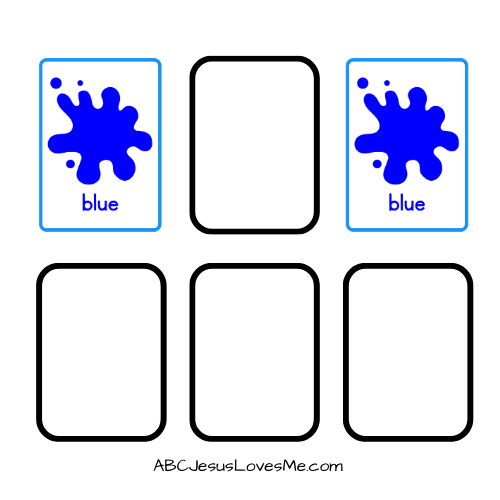
Print two copies of the free Color Flashcards. Cut out. Adjust the difficulty by using fewer pairs for younger children or adding more pairs for older kids. Shuffle both sets of color flashcards together and lay them face down in a grid pattern on a flat surface. Ensure the cards are evenly spaced for easy access.
Explain to the child that the goal of the game is to find matching pairs of color cards. When it's their turn, they will flip over two cards to see if they match. Choose a child to go first. They will flip over two cards, one at a time, trying to find a matching pair. Instruct the child to name the colors flipped. If the cards match, they can keep the pair and take another turn. If the cards do not match, turn them back over, and it's the next child's turn. Encourage the players to remember the positions of the cards they’ve seen to help them later.
Continue taking turns until all the pairs have been matched. Once all pairs are found, count how many pairs each child collected. The child with the most pairs wins!
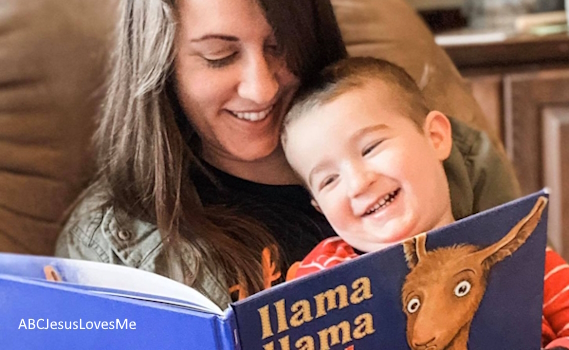
Read a story that features colors and use blocks to illustrate the colors mentioned. For instance, if the story talks about a “green frog,” have children find a green block and place it next to the illustration.
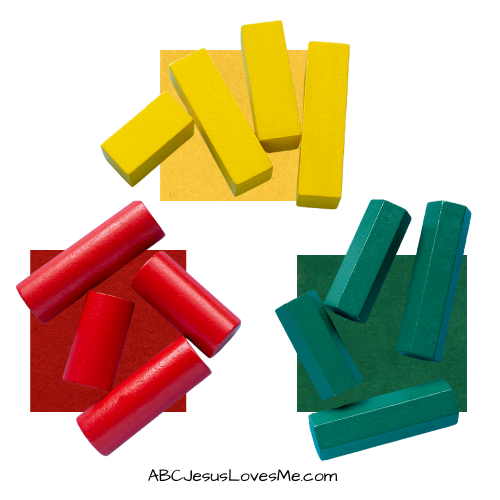
Place colored blocks in one area and colored cards, flashcards, or paper in another. Have children match the blocks to the corresponding colored cards, promoting both color recognition, sorting, and fine motor skills.
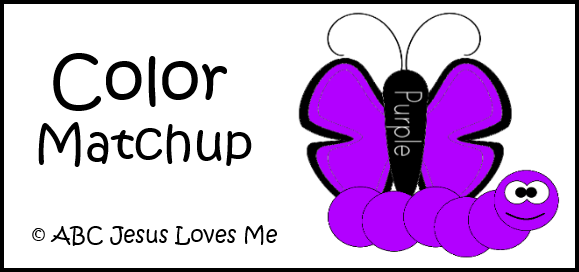
For Family Use: Help the caterpillar find its matching butterfly by color! Match each colorful segment of the caterpillar to the same color on the butterfly in this fun, colorful activity.
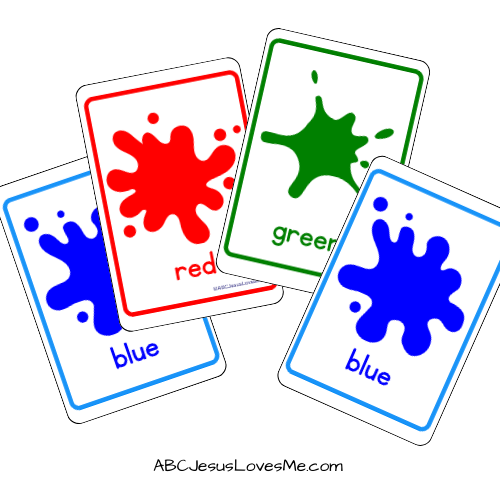
Print four copies of the free Color Flashcards. Cut out. Adjust the difficulty by using fewer colors for younger children or adding more colors for older kids.
Shuffle the cards and deal 4 cards to each player. Place the remaining cards face down in a pile in the center. Explain to the child that the goal is to collect pairs of matching color cards. Players will take turns asking each other for specific colors.
Choose a player to go first. On their turn, they can ask any other player if they have a specific color card (e.g., "Do you have a blue card?"). The player must have that color to respond. If the other player has the requested color card, they must give it to the asking player. If they do not have it, they say, "Go Fish!" The asking player then draws a card from the center pile.
If the asking player collects a pair of matching color cards, they can place them face up in front of themselves.
Continue taking turns in a clockwise direction until all pairs have been matched or there are no more cards left in the center pile.

Boz the Green Bear Color and Shape Video was a favorite of my children's when they were in preschool. With fun songs and God-focused learning, this video was a special treat for them to watch.
Instead of using the regular Twister rules, simplify the game for preschoolers to focus on color recognition while having fun with movement! Here's how to play:
Lay the Twister mat flat on the floor. Make sure there’s enough room for the child to move around safely.
Call out a color and a body part. For example, you could say, "Put your hand on blue," or "Place your foot on red." The child must find the correct color on the mat and place the chosen body part on it. Encourage them to name the color aloud as they move.
Switch roles so both you and the child get a chance to call out colors and body parts.
Once the child is comfortable, add a challenge by calling out two colors or asking them to switch body parts quickly (e.g., "Now, put your knee on yellow!").
Click to discover colors songs, activities, worksheets, and learning for individual colors.